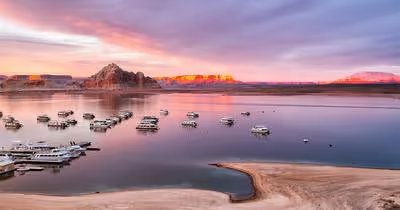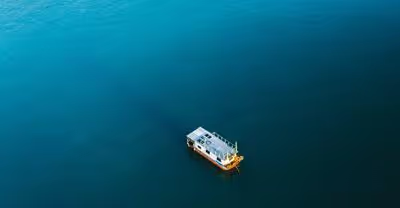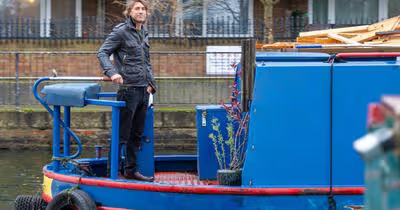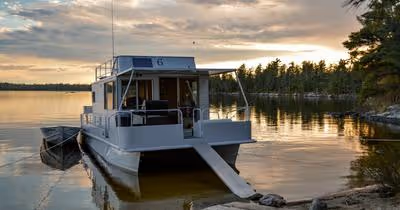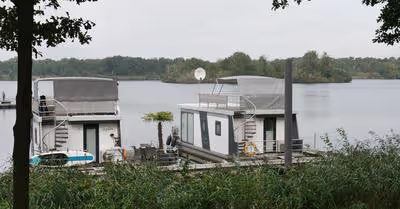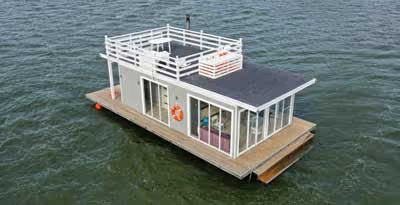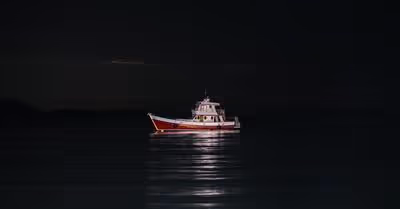
Key Takeaways
- Night boating offers a unique and peaceful experience with specific challenges.
- Understanding nighttime boating safety measures is crucial for a safe excursion.
- Proper preparation can significantly enhance the experience and safety of night boating.
Navigate the mysterious night seas with confidence. That’s because this is your ultimate safety companion to staying safe on the boat at sea at night!
Stay safe on a boat at sea at night by prioritizing proper navigation lights, maintaining a vigilant lookout, equipping essential safety gear, and understanding the importance of weather monitoring. These are a few things that will help you stay safe and sail confidently in the dark.
I've sailed through countless moonlit nights, learned from cool sailors, and even chatted with top ocean experts. So you're in the best hands for a secure and magical journey through the darkened waves. Let's set sail with confidence under the starry skies together!
The Ultimate Guide To Staying Safe On A Boat At Sea At Night
Boating at night can be an advantageous and peaceful experience. The calm and serenity of the open ocean at night, the gentle sounds of the waves, and the mesmerizing reflection of the moon on the water create an unforgettable atmosphere for a night at sea.
However, night boating also poses unique challenges and potential dangers that must be considered before heading out on the water. Understanding these risks and preparing accordingly can help ensure a safe and enjoyable adventure for you and your family.
To successfully navigate a boat at night, it is crucial to familiarize yourself with boating safety measures tailored explicitly to nighttime excursions. These measures include understanding navigation light rules, using proper communication equipment, and following best practices for tackling reduced visibility.
Additionally, making the necessary preparations for nighttime boating, such as outfitting your vessel with essential safety gear and planning your route ahead of time, can make all the difference in ensuring a safe and enjoyable trip.
Understanding Nighttime Boating
Always travel slowly and maintain a safe distance from other boats, shoreline obstacles, and fishing boats to ensure you can react quickly to unexpected situations.
Impact of Weather Conditions
Nighttime boating requires understanding how weather conditions can impact your experience. Factors such as wind, waves, and the strength of the moonlight play a crucial role in determining the safety and enjoyment of your boating excursion.
For example, rough water can make your fishing boat challenging to control and increase the risk of accidents. Keeping an eye on the weather forecast before heading to slow sea is essential to ensure a safe and fun experience.
Importance of Visibility
Visibility is a critical aspect of nighttime boating. As the sun sets and darkness engulfs the ocean at night, seeing other boats, obstacles like rocks, and shore features becomes more challenging.
To improve visibility, you should:
- Ensure your navigation lights are functioning correctly.
- Use a good flashlight to scan the water periodically.
- Keep a lookout for reflective markers and buoys.
- Avoid shining bright lights directly at other vessels, which can blind their crew.
- Familiarize yourself with the local coastline while there's still daylight.
It's also essential to familiarize yourself with the navigation rules and interpret the lights from other vessels to determine their direction, size, and possible intentions and interventions.
Boating Safety Measures
Just remember to stay prepared, keep a sharp eye on the open sea, and prioritize the safety of everyone on board.
Alcohol and Boating
When boating at night, staying alert and focused is crucial. Alcohol impairs your judgment and reaction time, making it a significant risk factor for accidents.
Refrain from consuming alcohol while operating a boat, especially during nighttime when visibility is limited, and avoiding alcohol can significantly reduce the chance of boating accidents at night. Remember that responsible captains prioritize the safety of their passengers.
Seasickness and Dehydration
Prolonged exposure to the boat's motion can cause seasickness, which can be exacerbated at night due to the lack of visual references. To prevent seasickness, take precautions such as eating light meals, staying hydrated, and taking seasickness medication before boating.
Dehydration is another common issue that arises from the combination of sun exposure and salt water that you can watch at Fish Lake or lit cold dust island waves. Drinking water and sunset protection can help avoid dehydration during your night trip.
Carbon Monoxide and Boat Fans
While boating at night, carbon monoxide (CO) poisoning can be a silent killer as it is both odorless and colorless. CO is released from boat engines, generators, or other onboard systems, and poorly ventilated spaces can concentrate the gas.
To ensure safety from carbon monoxide, CO alarms must be installed and regularly maintained. The boat should also have proper ventilation to prevent CO poisoning.
Life Jackets and Personal Flotation Devices (PFDs)
Life jackets and PFDs are essential float raft pieces of safety gear. Ensure that everyone on the boat is wearing a properly fitted life jacket, even if they are experienced swimmers.
Accidents can occur unexpectedly, and a life jacket can make the difference between life and death in an emergency. Regularly inspect life jackets for wear and tear and replace them when necessary.
Safe Boating Rules
One of the best safety measures for boating at night is following safe practices. Some of these rules include keeping a safe distance from other boats' feet, obeying speed limits, and having a designated lookout person.
Knowing local navigational rules, using proper lights, and maintaining situational awareness will significantly contribute to a safe boating experience.
Navigating a Boat at Night
Navigating a boat at night can be a thrilling yet challenging experience. It's essential to remain vigilant and follow safety guidelines to ensure a memorable and safe night on the water. The night moon reflecting on the open sea creates a mesmerizing scene against the darkness.
Understanding Navigation Lights
Navigation lights play a crucial role in boating at night. These lights help you and others identify each other's positions, courses, and vessel sizes. They also prevent collisions as you sail across the open sea.
Sailboats and motorboats have different light requirements regulated by the U.S. Coast Guard. Understanding the navigation light system and following the rules for displaying the lights can ensure a safer boating experience.
Use of Chart Plotter and GPS
To navigate safely at night, it's essential to have accurate and reliable navigation tools at your disposal. A chart plotter offers an easy-to-read map showing your boat's position, speed, and direction, while GPS provides your real-time location.
Ensure your chart plotter and GPS are updated and functioning correctly before setting sail on your nighttime adventure. In addition, knowing how to use these tools effectively will allow you to determine your course with precision.
Here’s a table showing the essential navigation tools and their purposes.
Role of Radar
Radar is another critical tool for night boating. It allows you to detect other boats, ships, and obstacles in the surrounding waters, thus ensuring safety while cruising in the ocean at night.
With radar, you can monitor weather conditions and identify hazards such as squalls or rough water. Don't forget to regularly check the radar to maintain situational awareness and make better decisions during your night voyage.
Pros of using radar in night navigation:
- Detects other vessels, obstacles, and potential hazards
- Monitors weather conditions
- Enhances situational awareness
Preparations for Nighttime Boating
Proper preparation is essential for a safe and enjoyable boat trip at night, especially considering the potential hazards of reduced visibility, weather conditions, and other boats on the water during the dark.
Fuel Management
Ensuring your boat has an adequate fuel supply is crucial for a successful and stress-free night trip. Before leaving the dock, it is essential to check the fuel levels and calculate the necessary amount of fuel needed for the entire journey.
Consider factors such as rough waters and the wind that might influence fuel consumption. Remember to have extra fuel stored onboard to account for unexpected circumstances.
First Aid Kit
A well-stocked kit is a must-have for any nighttime boating adventure. Ensure to include essential items like bandages, antiseptic wipes, pain relievers, seasickness medications, and any necessary prescription medications.
Additionally, it may be helpful to have supplies on hand to address weather-related issues such as sunburn, hypothermia, and dehydration. Prioritize the well-being of your senses and your health throughout the journey.
Emergency Plan
Developing an emergency plan is a big deal with any unexpected situations or potential hazards that may arise while boating at night. This plan should cover a range of scenarios, such as medical emergencies, mechanical issues, and Man overboard situations.
- Medical Emergencies: Ensure you can communicate with emergency services, such as a VHF radio or a satellite phone, especially if you're in open water. Ensure all crew members are trained in essential first thing and aid or CPR.
- Mechanical Issues: Keep a tool kit and spare parts onboard to address minor boat repairs that might be needed during the night trips, such as fixing a broken navigational light or addressing engine issues.
- Man Overboard: Establish a prearranged man overboard procedure, ensuring everyone on board is familiar with the plan. This may include throwing a life ring, using a strobe light to mark the location, and alerting other boats.



